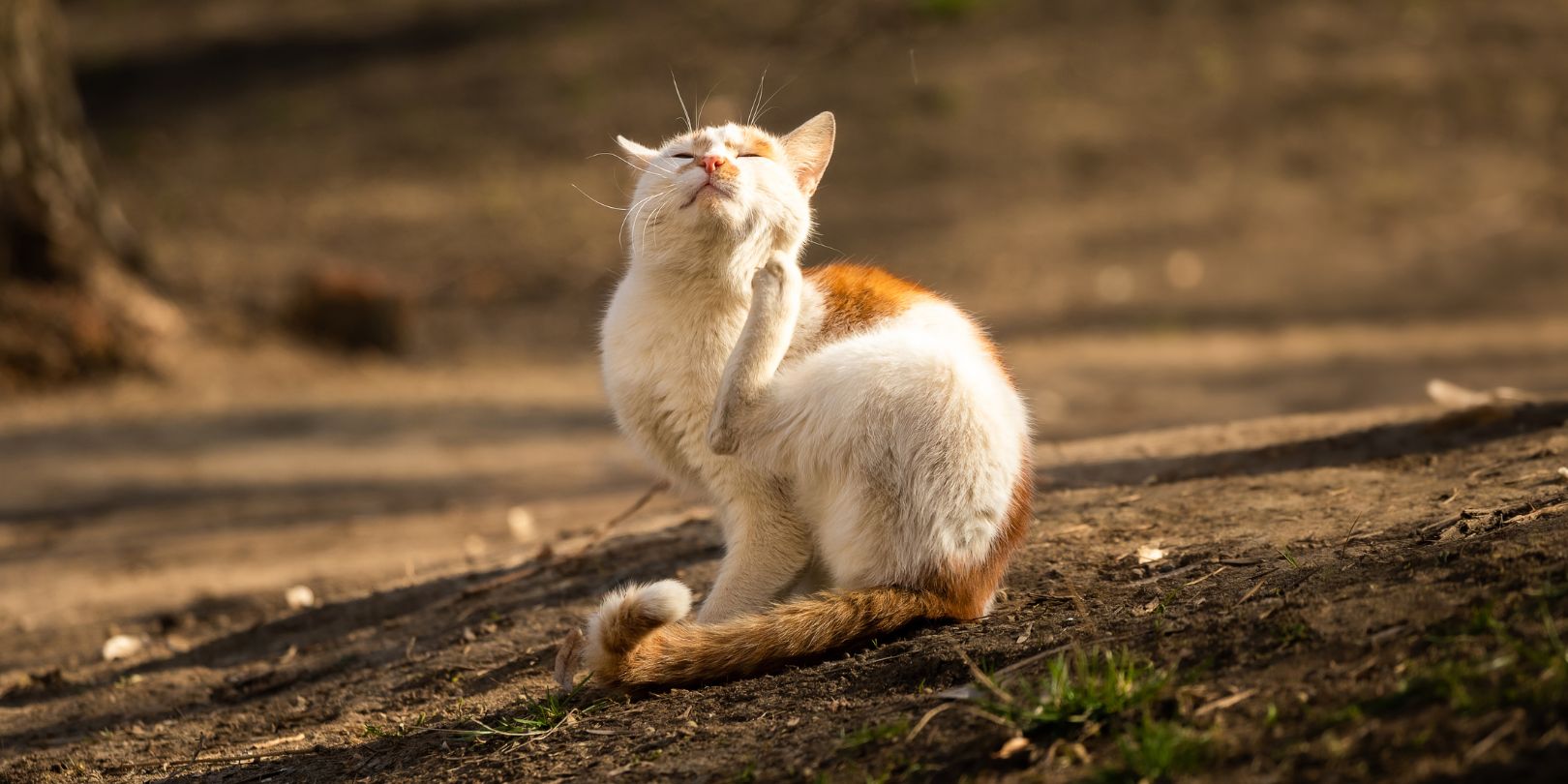What Do Cat Fleas Look Like and How To Treat Them

xr:d:DAFo1FL9DFI:1414,j:3056095671674766750,t:23091818
Our pets bring immense joy to our lives, and we would do anything to keep them safe and comfortable. However, even the most pampered pets can fall prey to the pesky presence of fleas. These tiny, resilient creatures not only cause discomfort to our beloved companions but can also pose health risks. Recognizing the signs of a flea infestation and understanding how to treat these unwelcome guests is essential for ensuring your cat’s well-being. In this comprehensive article, we will go over what to look for and insights into effective treatment options to restore you and your cat’s comfort.
What Do They Look Like?
Cat fleas (Ctenocephalides felis) are reddish-brown insects measuring approximately one to two millimeters in length. They possess flattened bodies, allowing them to move seamlessly through your cat’s fur. Fleas are equipped with strong legs designed for jumping remarkable distances relative to their size, making them adept at transferring between hosts. These parasites feed on your cat’s blood, causing itching, discomfort, and potentially triggering allergic reactions in both your cat and yourself.
Signs of Flea Infestation
Excessive Scratching
If your cat is scratching more than usual, it’s a clear indication of discomfort. Fleas cause itching and irritation, prompting excessive scratching, biting, or licking.
Visible Fleas or Flea Dirt
Flea dirt, the feces of adult fleas, appears as small black specks on your cat’s skin or fur. It resembles coarse black pepper and turns reddish-brown when wet.
Hair Loss and Skin Infections
Flea infestations can lead to hair loss, red and inflamed skin, and even bacterial infections due to excessive scratching.
Restlessness and Irritability
Cats suffering from flea bites may become restless and irritable, exhibiting changes in behavior.
Effective Treatments
Flea Prevention
Regular use of vet-approved flea prevention products is the cornerstone of flea control. These treatments come in various forms, including topical solutions, oral medications, and flea collars for cats.
Flea Shampoos and Sprays
Specialized flea shampoos and sprays can help eliminate adult fleas on your cat’s body. However, these treatments provide short-term relief and should be used in conjunction with other preventive measures.
Environment Cleaning
Fleas don’t just infest your cat; they also lurk in your home. Thoroughly clean your cat’s bedding, vacuum carpets, upholstery, and any areas your cat frequents. Wash bedding in hot water and treat your home with pet-safe flea sprays.
Consult a Veterinarian
If your cat’s infestation is severe or if you’re unsure about the best course of action, consult your veterinarian. They can recommend tailored treatments and provide guidance on long-term prevention.
Preventing Future Infestations
Regular grooming and preventive measures are key to preventing future flea infestations. Establish a routine that includes regular combing, checking for signs of fleas, and staying consistent with your cat’s flea prevention regimen.
Holistic Approaches to Flea Control
In addition to traditional flea control methods, many cat owners are exploring natural and holistic approaches to combat fleas. Essential oils like lavender, cedarwood, and neem have been used to repel fleas due to their natural insect-repelling properties. However, it’s crucial to exercise caution when using essential oils around cats, as their sensitive respiratory systems can be affected. Consult your veterinarian before incorporating any natural remedies into your flea control regimen. Additionally, some holistic flea control methods involve dietary adjustments, such as adding certain supplements like brewer’s yeast to your cat’s diet, which is believed to alter the taste of their blood and make them less appealing to fleas. While these holistic approaches may have merit, it’s essential to prioritize your cat’s safety and well-being by seeking professional advice before implementing them.
Final Thoughts!
Cat fleas are not only a nuisance but also a health concern for your feline companion. Recognizing the signs of an infestation and taking swift, informed action is crucial for maintaining your cat’s comfort and well-being. By understanding their appearance, behavior, and the variety of treatment options available, you’re equipped to wage a successful battle against these persistent pests. Your commitment to providing a flea-free environment ensures that your cat can revel in the joys of a healthy, itch-free life.
Your Pet’s Best Interest, Always
At Pet Institute, we take pet care seriously. We're dedicated to transparency, impartiality, and the well-being of your pets in every article, review, and recommendation we provide. Our unwavering commitment to these principles ensures that you, our valued reader, always receive reliable and unbiased information. Let us be your trusted guide in the world of pet care and companionship.